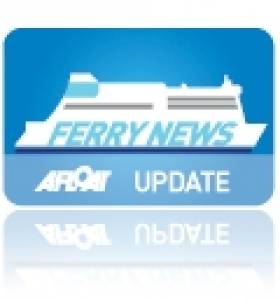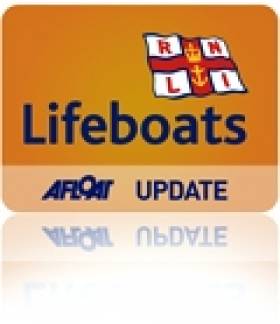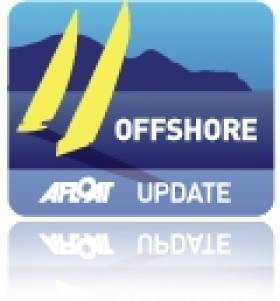Displaying items by tag: missing
Body Of Missing Student Recovered Off Baltimore
#Baltimore - RTÉ News reports that the body of student Barry Davis Ryan was recovered off the coast of West Cork yesterday evening (Friday 10 July) after a week-plus search operation.
As previously reported on Afloat.ie, diving volunteers from all over Ireland had joined the recovery effort this week more than seven days after the tragedy that took the lives of Davis Ryan's girlfriend, Niamh O'Connor (20), and his father, 51-year-old Barry Ryan, when all three were washed out to sea from the shore near Baltimore on Tuesday 30 June.
Davis Ryan's remains were reportedly found in the last search window before poor weather would have halted efforts till next week.
#Missing - Diving volunteers from across Ireland joined the effort to search for missing student Barry Davis Ryan off West Cork yesterday (Thursday 9 July), more than a week after the tragic death of his father and girlfriend.
As previously reported on Afloat.ie, 51-year-old Penney's retail scion Barry Ryan and 20-year-old Niamh O'Connor were recovered off the coast near Baltimore on Tuesday evening 30 June, but died soon after.
Davis Ryan was last seen entering the water to rescue O'Connor, who had been swept into the sea while walking on rocks. His father then followed them into the water as they were both in difficulty, but all three were swept out to the Eastern Hole, as The Irish Times reports.
Despite poor weather conditions over the last week, the search has continued for Davis Ryan, with John Kearney of the West Cork Underwater Search and Rescue unit expecting as many as 200 dives by more than 100 volunteers to be conducted yesterday between 6am and 10pm, searching a rocky area some 23 metres deep, 300 metres long and almost a kilometre wide.
And 60 divers were expected to join the effort this morning (Friday 10 July) before forecast poor weather sweeps in later today. The Irish Times has more on the story HERE.
US 49er Sailor Trevor Moore Missing Off Florida
#Missing - An Olympic sailor from the US who competed in the 49er class at London 2012 has gone missing in Florida's Biscayne Bay, as The Guardian reports.
Last night (Saturday 27 June) the US Coast Guard suspended its search for 30-year-old Trevor Moore, who competed with skipper Eric Stork in the same class as Irish Olympians Ryan Seaton and Matt McGovern.
An inflatable dinghy containing Moore's belongings was found adrift at Dinner Key in Miami on Thursday evening (25 June), prompting a massive search operation over 510 square miles.
US Sailing Statement On The Disappearance of London 2012 Olympian Trevor Moore -
FOR IMMEDIATE RELEASE
June 28, 2015
The US Coast Guard (USCG) announced on Saturday, June 27 the suspension of the search for London 2012 US Olympic sailor Trevor Moore (Miami, Fla.). Moore, 30, was last seen on Thursday, June 25 on a small motorboat in Biscayne Bay off Miami. Coast Guard search and rescue teams covered over 510 square nautical miles of territory and completed more than 29 search patterns since initiating the operation. The USCG was assisted by the Florida Fish and Wildlife Conservation Commission, City of Miami Police Department, the National Park Service, Miami Dade County Fire Rescue, and dozens of local volunteers. The volunteer search is ongoing.
"We are deeply saddened by Trevor's disappearance on Biscayne Bay, and wish to extend our sympathies to the Moore family," said Josh Adams, Managing Director of US Olympic Sailing. "In his time as a Laser and 49er sailor, Trevor has performed at a high level and made major contributions to the US Olympic sailing effort. He was a member of the 2012 Olympic team and several past editions of the US Sailing Team Sperry, a teammate and friend to many. In addition to the US Coast Guard's highly professional search for Trevor on Biscayne Bay, an extensive volunteer effort was organized and led by sailors on all manner of craft, which is a testament to the impact Trevor has had on the sailing community. Our thoughts are with his fiancée Libby Patton and the entire Moore family."
After winning College Sailor of the Year honors for Hobart and William Smith Colleges in 2007, Moore competed in the Beijing 2008 Olympic Trials in the Laser class, finishing 4th. Moore later teamed up with Erik Storck (Huntington, N.Y.) and won selection for London 2012 in the two-man 49er class. After competing at the Olympic Regatta in Weymouth and Portland, UK, Moore switched from the crew position in the 49er to skipper, and campaigned for Rio 2016. He retired from campaigning in the Summer of 2014, and has remained involved in Olympic sailing as a coach.
The Florida Fish and Wildlife Conservation Commission will lead the ongoing investigation into Moore's disappearance.
– end –
Search For Passenger 'Missing' From Irish Sea Ferry
#Missing - RNLI lifeboats from Bangor and Donaghadee joined the search early yesterday morning (Tuesday 19 May) for a passenger feared to have gone overboard from an Irish Sea ferry in Belfast Lough.
As BBC News reports, it's believed a man from Manchester went missing from the Stena Mersey overnight ferry from Birkenhead to Belfast.
Reports have it that he was last seen overnight as the ferry crossed the Irish Sea, and the search was divided between inner Belfast Lough and from the Copeland Islands into the sea long the ferry route.
#Missing - The body of a man recovered from Dublin Bay this afternoon (Sunday 10 May) is believed to have been in the water for several weeks, and is thought to be the subject of a recent missing person's report, as The Irish Times reports.
A ferry passing south of Howth Head made the gruesome discovery and raised the alarm with the Irish Coast Guard, with Dun Laoghaire RNLI also sending a lifeboat to the scene near Burford Bank.
The Irish Times has more on the story HERE.
Portaferry Lifeboat Joins Multi-Agency Search For Missing Woman
#RNLI - Portaferry RNLI's volunteer lifeboat crew were called out yesterday (Wednesday 29 April) to help in the search for a woman reported missing to police.
The RNLI lifeboat, an Inshore Atlantic 85, was launched at 5.05pm and the volunteer crew were on scene, just off Strangford village on the shores of Strangford Lough in Co Down, two minutes later to commence their search of the waters along the shoreline towards the northern end of the lough.
Weather conditions at the time had rain but with good visibility and a Force 4 westerly wind.
The multi-agency search included members of the PSNI, coastguard teams from both Portaferry and Bangor, and Rescue 116, the Irish Coast Guard helicopter dispatched from Dublin.
The volunteer RNLI crew searched Strangford Lough’s western coastline as far north as Salt Island before crossing to the eastern side and searching towards the southern end, through Ballyhenry Bay towards Portaferry and the stretch of water running between Portaferry and Strangford village known as The Narrows.
It was as the volunteer RNLI crew reached Portaferry that they received word to stand down as news came through that the missing woman had been found.
Speaking on behalf of Portaferry RNLI, lifeboat operations manager Brian Bailie said: "It is at times like this that all of the hard work and training our volunteers put in comes to fruition.
"Training with the other emergency and rescue services is essential for all concerned, as today certainly proves."
Body Discovered In Search For Missing Fisherman Off Clare Coast
#Missing - RTÉ News reports that a body was found yesterday morning (Sunday 19 April) in the search for a missing fisherman off the Clare coast.
The search and rescue operation began in the early hours of yesterday morning after four people working with tractors in the oyster beds at Poulnaserry Bay got into difficulty when the tide came in.
Three of the fishermen were rescued by a local boat. RTÉ News has more on the story HERE.
Irish Cruise Passenger Lost 'Overboard' In Caribbean
#Missing - The circumstances surrounding the disappearance of an Irish man on a Caribbean cruise "remain unclear", according to US coastguard chiefs.
The Irish Independent reports on 67-year-old Dominic William O'Carroll, who was reported missing on Monday 13 April after a crew member on Croisières de France's MV Horizon saw something fall overboard from the vessel that morning.
A search and rescue operation covering more than 1,000 square nautical miles of the coast off Puerto Rico has since been called off.
The Irish Independent has more on the story HERE.
Search For Missing Man At Cliffs Of Moher
#Missing - The search continues for a missing man feared to have fallen into the sea from the Cliffs of Moher.
As the Irish Independent reports, the search entered its fourth day today, with Garda divers hampered by poor conditions underwater at the foot of the cliffs.
The alarm was raised on Sunday night, with gardaí subsequently finding a car belonging to the missing man parked not far from the famous tourist attraction in Co Clare.
American Sailor Rescued After 66-Day Survival At Sea
#Offshore - They say you should never leave port on a Friday – and following his rescue after more than two months lost at sea, American sailor Louis Jordan will surely be ruing that decision!
As TheJournal.ie reports, the 36-year-old beat the odds when he was picked up by a container ship some 200 miles off the coast of North Carolina yesterday (Thursday 2 April).
It brought an end to a 66-day ordeal for Jordan, who had departed Bucksport in South Carolina on Friday 23 January on a fishing trip, but ran into trouble when rough weather disabled both his boat and his communications gear.
While his family prepared for the worst, Jordan survived in the open sea by drinking whatever rainwater he could collect and fish he could catch. TheJournal.ie has more on this remarkable story HERE.
Elsewhere, the people of Sakhalin on Russia's Pacific coast have been devastated by the loss of at least 56 sailors after the sinking of a Russian trawler in the Sea of Okhotsk.
According to the Guardian, questions have been raised about whether the owner and international crew of the Dalny Vostok, based at Russia's largest island, had been cutting corners in their hunt for a big catch.






































































